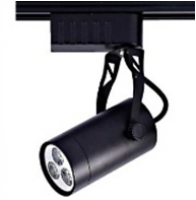Top News
Mr. Nguyen Quan Chinh, Vice Chairman, People's Committee of Quang Tri Province came to visit the site of LED installation.
Alternative Energy: Rain Power

In a study featured in Smart Materials and Structures, a physics journal, the authors, Romain Guigon, Thomas Jager, Ghislain Despesse and Jean-Jacques Chaillout, write about how it is possible to recover energy from the impact of a raindrop of water. To measure such energy, they built a rain catcher which would allow them to control the amount of water falling on top of a piezoelectric material, in this case made out of polyvinylidene fluoride. A piezoelectric material is a material that is able to convert mechanical energy into electrical energy (see here, and here for other examples where this material was used). Their findings were interesting: slow falling droplets produce more energy than high falling droplets, and as you’d expect, the larger the water droplet, the more energy that was generated.
As for the total amount of power that was recovered? Not much at the moment. Their simulations showed how 1 droplet can generate anywhere between 1 microwatt and 12 milliwatts. What does this mean overall? It is expected that for every square meter of surface, the process could generate about 1 watt-hour per year. This is definitely not going to power your Ipod anytime soon, but there is ample room for progress. After all, piezoelectric materials are still a fairly new technology.
An outlandish idea which at the moment seems unable to produce any significant amount of power? sure! Then again, they did say that about solar power at some point.
(Inhabitat)
Source: tietkiemnangluong.com.vn
Newer articles
- Smart meter “extras” to boost business energy saving (24/02/2015)
- Four achievements and five solutions for EVN (24/02/2015)
- Solar power in the UK almost doubled in 2014 (08/02/2015)
- Scotland helps companies diversify into marine energy sector (08/02/2015)
- Iceland Geothermal Conference 2016 to focus on benefits of geothermal energy (08/02/2015)
Older articles
- EVN Enhances Power Saving (08/02/2015)
- Hanoi promoting Energy saving in industrial production (08/02/2015)
- The car of the future is all about energy efficiency (31/01/2015)
- Energy Saving in Transportation Promoted (31/01/2015)
- Switching to energy efficient electrical appliances (31/01/2015)
Devices
Energy Audit
ONLINE
(0909.901.045)
| MOU SIGNING CEREMONY ABOUT SPECIAL LED WITH COB TECHNOLOGY FOR FISHING SHIPS BETWEEN QUANG TRI PPC AND NEDO |







































